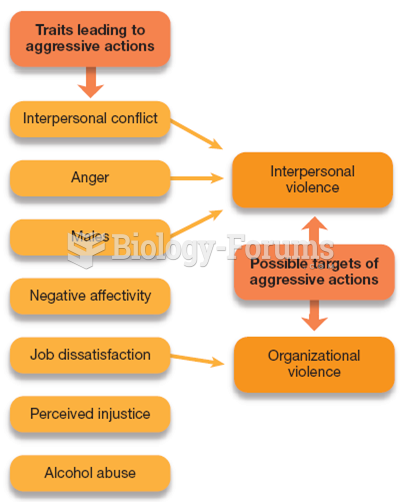|
|
|
Elderly adults are at greatest risk of stroke and myocardial infarction and have the most to gain from prophylaxis. Patients ages 60 to 80 years with blood pressures above 160/90 mm Hg should benefit from antihypertensive treatment.
The most dangerous mercury compound, dimethyl mercury, is so toxic that even a few microliters spilled on the skin can cause death. Mercury has been shown to accumulate in higher amounts in the following types of fish than other types: swordfish, shark, mackerel, tilefish, crab, and tuna.
The Romans did not use numerals to indicate fractions but instead used words to indicate parts of a whole.
The most common treatment options for addiction include psychotherapy, support groups, and individual counseling.
When blood is exposed to air, it clots. Heparin allows the blood to come in direct contact with air without clotting.







